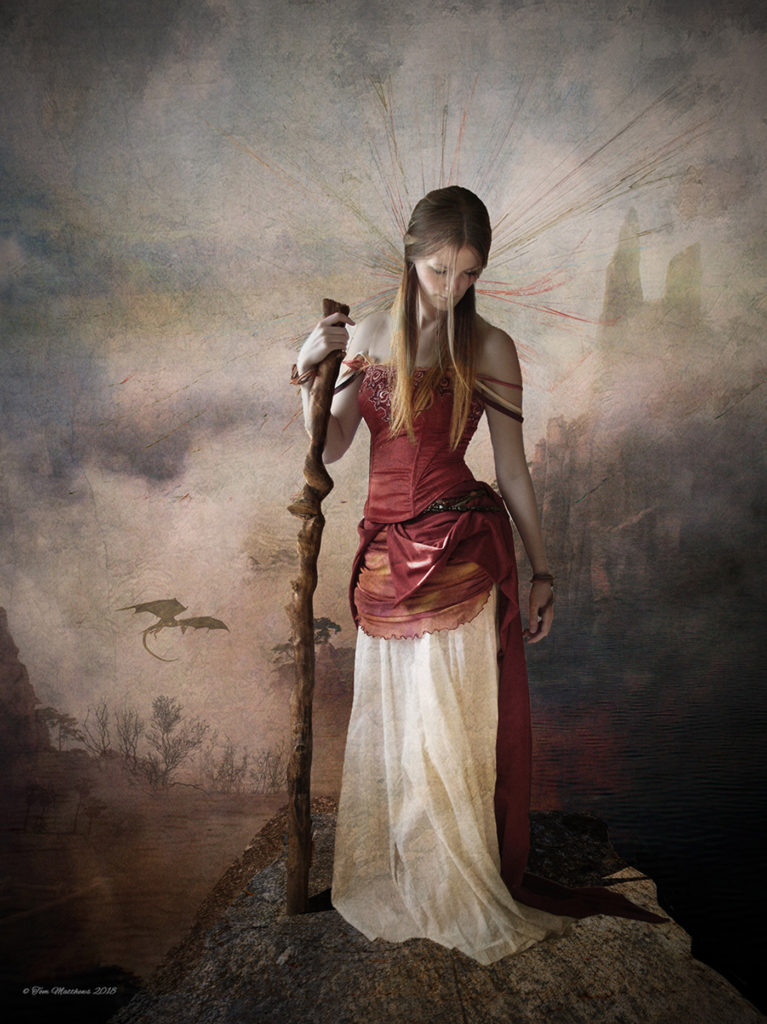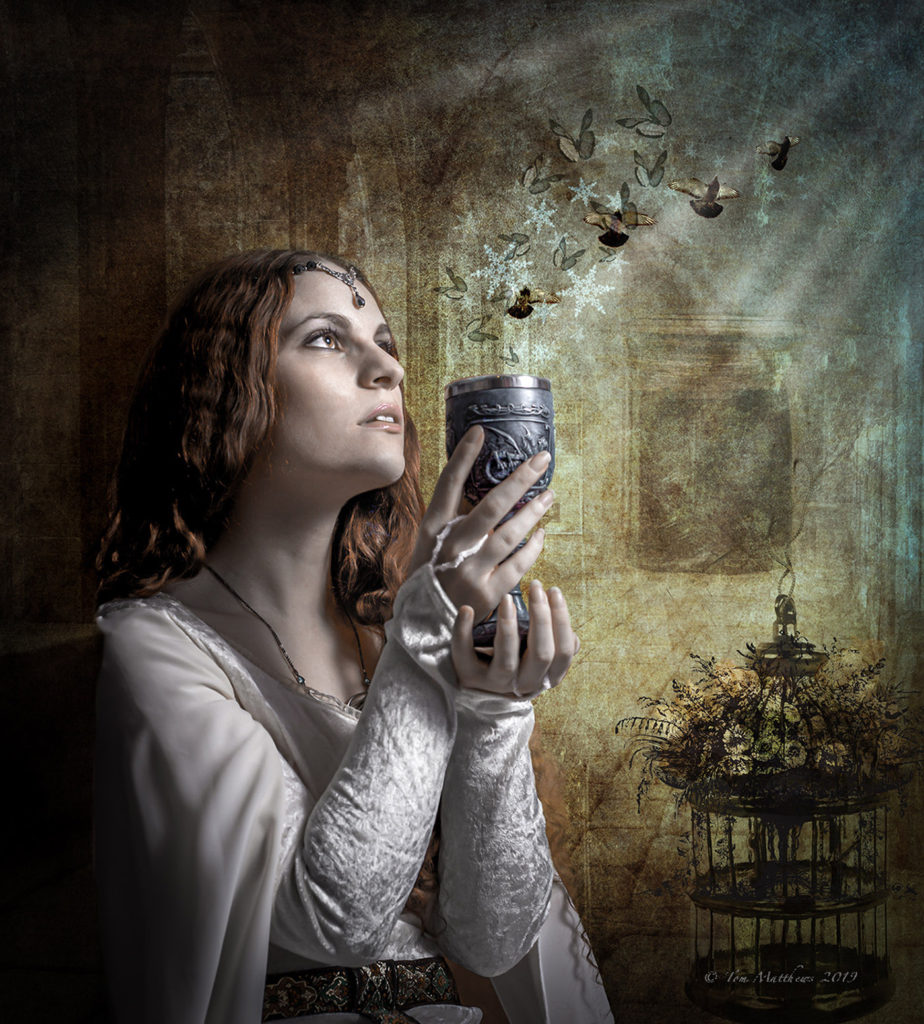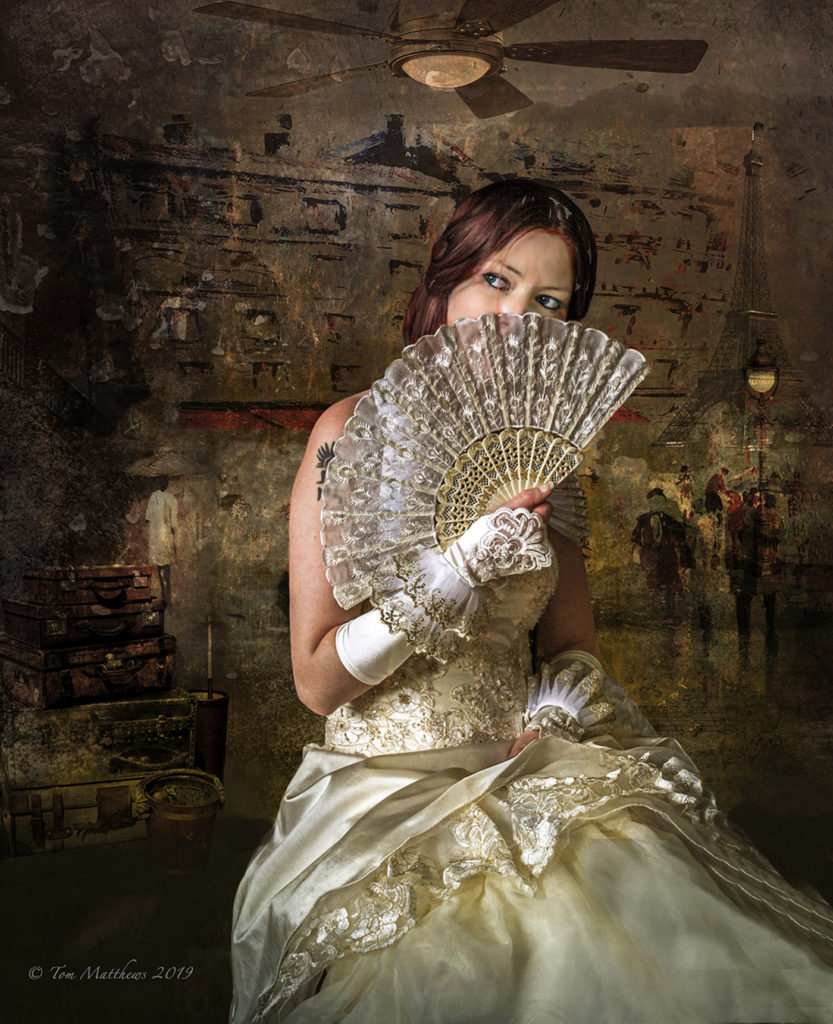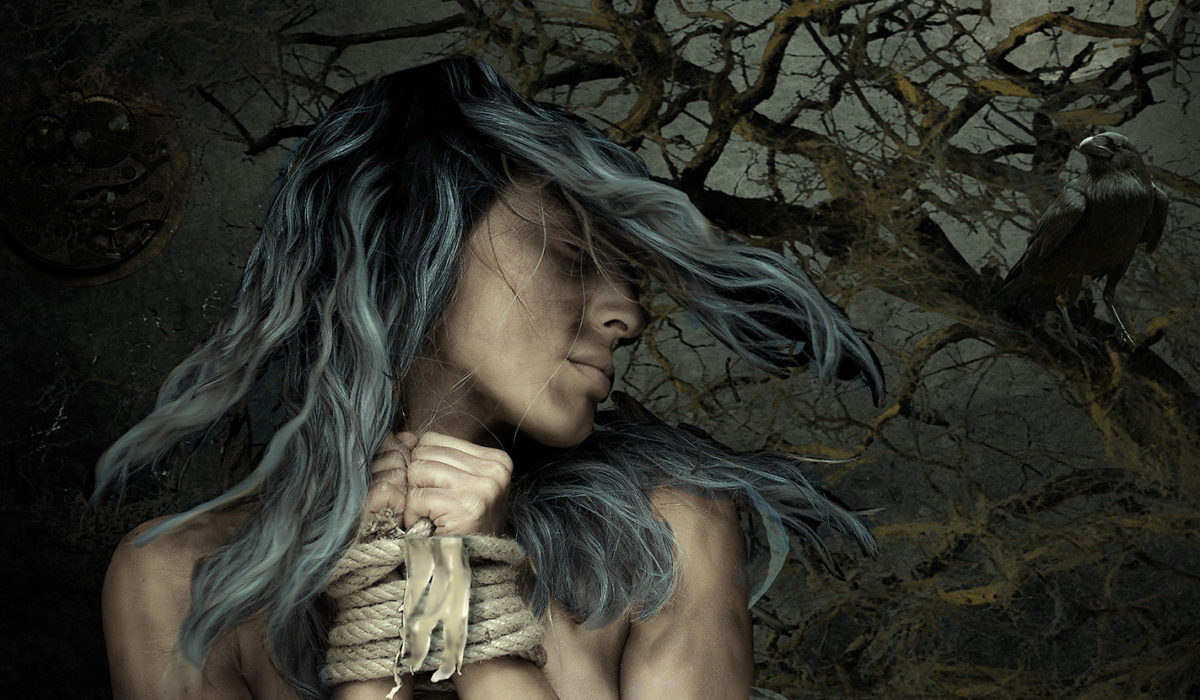— The featured artist of the 53rd issue of Living the Photo Artistic Life magazine is Florida-based AWAKE artist Tom Matthews, and I’m pleased to be able to share my interview with him here on Quill and Camera . . .

Q: Tell us a little about your background as an artist?
I have been involved in music and art since elementary school. My first love was drawing, using pencil and colored pencils, then switching to ink. And that carried on through high school, when I began taking classes at a local university on weekends. I remember that these classes challenged me to learn new techniques and to create ever more complex drawings. As the next logical step, I moved into painting using acrylics, although there I didn’t take any classes, I just started painting and picked up some books about painting.
It was then in my life that I spent four years in the Air Force, including a year in Vietnam, where I wasn’t involved in art or music in any way. After my years in the military I went on to college to study and graduate with a degree in Electrical Engineering. I began to draw and paint again, but nothing serious. And after graduating, my career involved traveling around the United States and living in five different foreign countries. While traveling, I always kept a connection with art by visiting the famous art galleries in Europe and the United States. As part of all this traveling, I got involved in photography. And as my career progressed and I was traveling less frequently, I started to paint again using acrylics.
At this point I began taking classes in drawing and painting at a local private arts school. First drawing classes and then oil painting. I did this for about three years. I fell in love with oil painting and the chiaroscuro style of contrasting ares of light and dark.
During this same time in my life, my photography skills increased and I began using a digital camera but not Photoshop. Since it took quite awhile to finish an oil painting, I instead began experimenting with combining art with my photography using Lightroom.
Then I discovered the instruction provided by Sebastian Michaels through the Photoshop Artistry course. And I was hooked! I felt I could finally combine my painting skills with photography. The rest is history.

Q: Where do you get your inspiration for your compositions?
When I first began this journey, my inspiration came from the great painters of the Renaissance. Then as I progressed through the Photoshop Artistry course and AWAKE, my inspiration started coming from the work I was seeing by other artists in our group and beyond. There is so much great art being created and posted on social media today, it’s hard not to get inspired by it all.
Now that I have the Photoshop skills, I can concentrate on actually creating art instead of mulling over HOW I’m going to create art. I can now go out and draw inspiration from whatever I see in the world around me — all the shapes, colors, and textures I encounter, wherever I see something that catches my eye — say a group of fishing boats along a dock — and immediately begin to see the possibilities for incorporating elements and scenes into a new piece of art.
Q: What do you most want to convey in your art?
I really want to convey emotion in my art. I would hope that the viewer will experience some kind of emotion, ideally the same emotion I felt when creating it.
I especially like to use contrasts to bring out conflicting emotions, and hope that portraying those contrasts will convey something of what they meant to me.
My main ways for creating conflict include pitting light and dark against each other, or using color to create tension within a piece, or orchestrating some kind of conflict between the subject and the area around the subject.
I believe I have become much better at using conflicting elements in my work, and I am always working to improve further. I’m thinking more and more about this use of conflict in my work now that I have the skills (and tools) to control light and color in Photoshop.

Q: How do you approach your work? Any particular process you tend to follow?
I believe that I am like most artists. I don’t sit down and begin a piece of art with any fixed idea or theme in mind. Instead, I’ll look at a set of images — whether they be models, objects, or backgrounds — and try to draw inspiration from them. I’ll have some music on in the background, and an emotion will inevitably arise as I find just the right image to use. I will then experiment with various backgrounds and textures that I think will enhance that emotion. Of course, all the while keeping contrasts in mind. And I will complete a piece by introducing some objects I feel amplify the emotion I was going after. Finally, I’ll do some post-production work to ensure that the lighting and toning all fit.
Q: Ultimately, what does “living the photo artistic life” mean to you?
It means being “awake,” being creatively conscious of the world around you and seeing that world through the eyes of an artist. In this way, it’s about being more aware, for instance, of how light falls on an object or model and the shades of color produced by that light. Or being deeply aware of how things are textured, whether it be the pattern on a model’s dress or the shape and patterns of the clouds in the sky. It means experiencing all these things, and no longer being able to ignore them. And it means discovering yourself — your deepest creative self — in that process of taking in the world around you and shaping it through the craft of your art.

